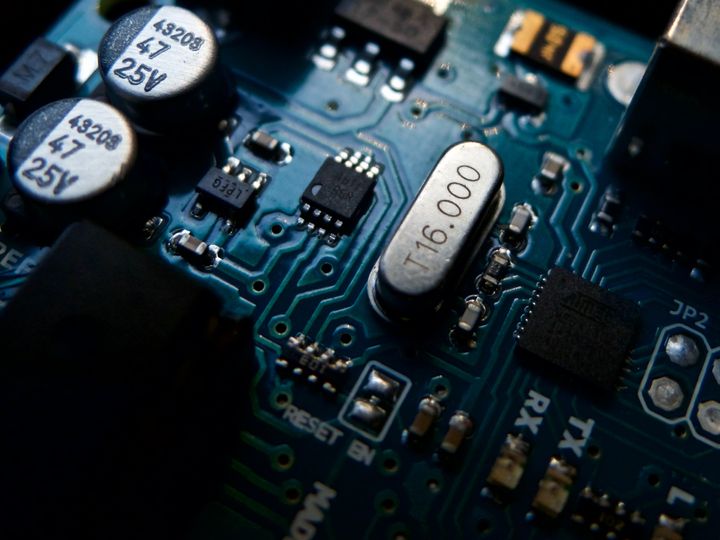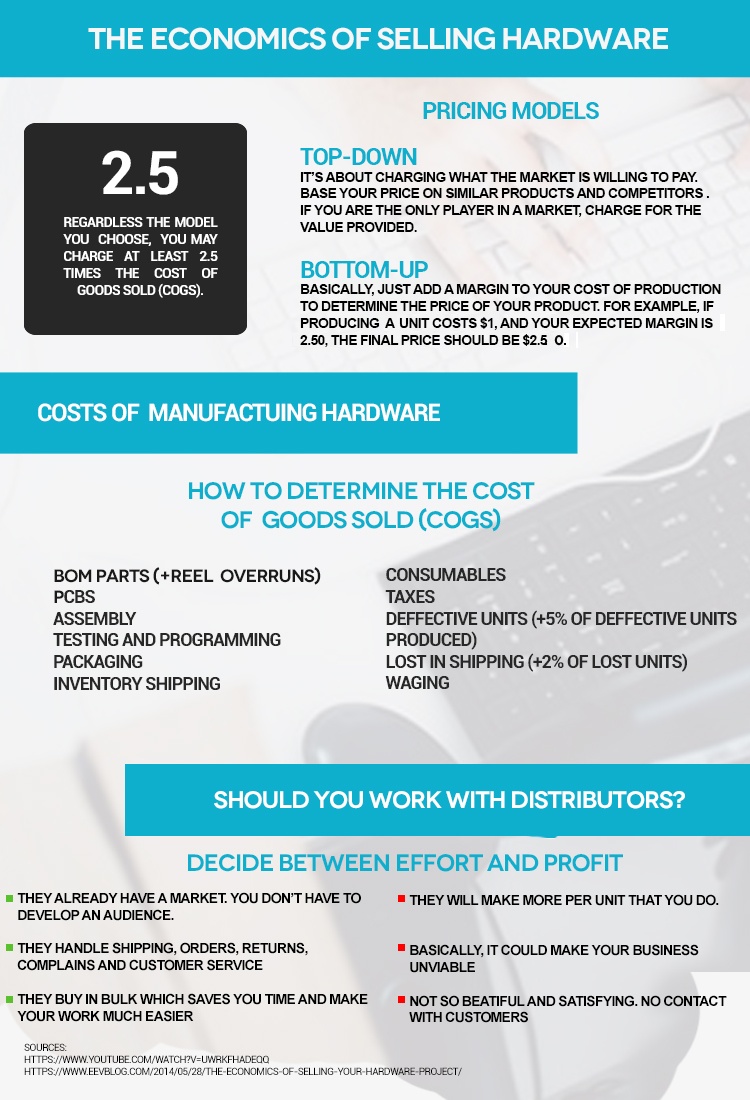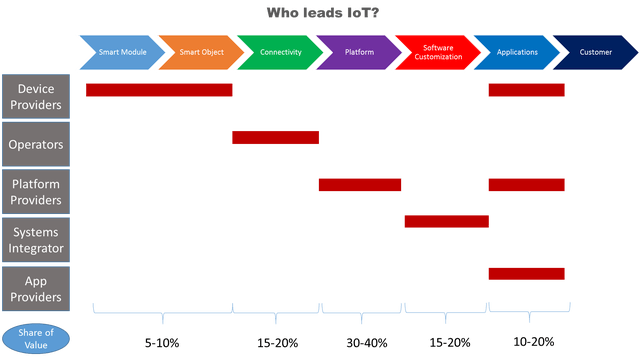[Infographic] How to sell hardware the right way

So many hardware sellers struggle with the price they should charge. We wanted to make decision making easier for you with this post.Today, we will answer:
- How should you price hardware?
- What are the hidden costs of hardware manufacturing?
- Should you work with distributors or sell the product yourself?
- Is selling hardware a good business?
Let’s get started:

1. How hardware should be priced?
The bottom-up model is the favorite among hardware sellers. They identify the cost of manufacturing per unit and multiply it to determine the sale price. It’s a good general rule to follow. You should take into account the margin you want to charge; a wrong decision could make you get out of business. David L. Jones from EEVBlog suggests that you should charge at least 2.5 times the cost of goods sold (COGS). For example, if producing one device costs you $1, you should price it at $2.50 or higher. Click here if you want to know a reasonable explanation. The bottom-up model is simple and usually effective.
But there is a more complex way to price hardware. The top-down model considers the average price of a certain product in the market. This model suggests considering a very similar price if you want to be competitive and profitable. However, you might consider the value provided and added and adjust accordingly. If you improve packaging and deliver related services, you could ask for more, even if the costs are very similar to competitors.
Also think about product elasticity, which basically means a product’s demand varies according to price. For example, very similar chocolate bars could cost from a few cents to dozens of dollars. Even though pricing changes widely, demand stays relatively the same. This makes chocolate an inelastic good. On the other hand, elastic goods are the ones whose demand varies significantly when the price does as well. The hardware market is very wide, so you should identify if the kind of hardware you sell is elastic or inelastic.
Also, consider the way you want to position yourself in the market. If you want to be seen as an exclusive, very reliable hardware provider, you should think about raising prices above the competition (and of course, provide superior service). If you want to reach a wider market, compete with lower prices.
You can choose the right price of hardware based on market knowledge. If you appeal to entry-point customers – those who are buying hardware for the first time or aren’t willing to spend lots of time choosing a provider – you could determine a higher price. The more experience and knowledge a market has, the more likely they are to choose based on lower prices.
As you see, the top-down model can go as complex as you want.
2. Hidden costs of hardware manufacturing
Of course, the raw material for production is not the only cost of hardware manufacturing. As mentioned in the infographic, you should consider factors such as:
- Reel overruns; very usual if it’s your first time with hardware
- Testing and programming, if you are already selling integrated services
- Waging based on the time it takes to fabricate one unit
- Shipping costs of materials for production
- Taxes paid after manufacturing
- The margin of defective units and lost shipments
3. Should you employ distributors?
To determine if you should work with distributors or sell hardware yourself depends on, among other things, the level of commitment to your business. If your core is selling hardware, we strongly recommend you do employ distributors. They save time but will take a larger margin than you do. In fact, they could take as much as the 60% of markup.
The good side of working with distributors is that they already own a market, and moreover, they assume marketing efforts (which easily can take from 3 to 20% of business income depending on the industry). They manage returns, complaints, customer service, shipping, and other processes that could take you tons of time. They actually could save you years of brand positioning if they are already recognized in the market.
But what if you try a combination? It’s completely valid. If it’s too hard to enter a market, it would be better to work with distributors. You can actually offset margins with sales volume. For instance, you can start using distributors to know how the market works and start earning money immediately, even though if you are risking profits. As time passes, you will be more confident to take care of more processes.
4. How to make hardware a more attractive business
First, let’s see which IoT key activities lead the value chain:

Source: Telecom Circle
According to this chart, device providers (hardware) don’t seem to have a very attractive position. They take up to 10% of the value chain of IoT. Conversely, key activities as platform providers are taking between 30% and 40%. It’s recommended for hardware providers is to build partnerships with lead players like platforms to take advantage of a 3x larger opportunity. That would allow them to increase value for customers (and prices) significantly.
Conclusion
We hope this blog post has served as a good guide for hardware providers. You’ve just seen that pricing hardware requires a holistic approach to all your costs combined with a strategic overview of how you will distribute it.1.

